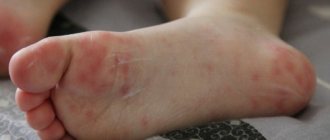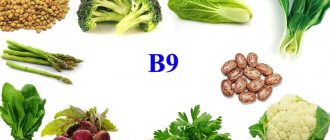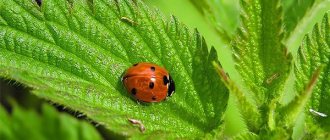Types of nuts that cause allergies
Any product, even the healthiest one, can cause allergies in a person. And then you will have to abandon it. Nuts, a favorite delicacy for many, literally turn into punishment for some people. There are many types of nuts. The most popular are:
- walnut;
- hazelnut;
- almond;
- cashew nuts;
- Pine nuts;
- pistachios;
- Brazilian nut;
- peanut.
The most common nuts that cause allergies are: peanuts, cashews and pistachios. Peanuts lead among their fellows. But this does not exclude the rest of the family from foods that can cause an overreaction of the immune system. Therefore, doctors do not recommend that nursing mothers add fat to their milk through nuts, despite all their benefits.
Firstly, it is difficult to deal with allergies in a young child. Secondly, it can cause severe complications (dermatoses, bronchial asthma). And thirdly, eating a large amount of nuts, especially walnuts, can lead to constipation, and in infants, to intestinal obstruction.
There are both true allergies to nuts and a reaction to food when you are oversaturated with it. Any product rich in vitamins and minerals, when overeated, can cause a reaction similar to an allergic one. It is caused by the fact that the enzymatic abilities of the body are not enough to break down the amount of product that has entered the digestive system. In this case, it is enough to stop using this product for a while and the reaction will pass. Subsequently, with moderate consumption of nuts, the reaction does not recur.
With true allergies, things are worse. In this case, the human body simply cannot cope with a certain type of protein. It (the body) perceives such a protein as a foreign and aggressive protein and reacts with an acute inflammatory reaction.
Factors that provoke the development or intensification of allergy symptoms include:
- eating chemically processed nuts;
- joint consumption of nuts and alcohol;
- combining nuts with plenty of protein foods.
The favorite combination of salted pistachios and beer or hazelnut sweets and wine is not recommended for consumption by allergists.
Allergy sufferers should be aware of the possibility of cross-reaction to food. For example, if you have an allergic reaction to legumes, you should not get carried away with peanuts; if your body perceives mangoes too aggressively, you should not experiment with cashews and pistachios with beer. If the flowering period of alder and birch is a hellish time for a person, he should refrain from hazelnuts and the usual walnuts, especially during the period of severe manifestations of allergosis. If the body does not tolerate quince or apricots, plums or rose hips, almonds should be avoided. You should pay special attention to what children eat.
Relapse Prevention
Properly selected drug treatment is only half the success in overcoming allergies. Positive changes are unlikely to happen if you do not strive to change your lifestyle. For an allergy sufferer you need:
- Consistently follow a diet that excludes pine nuts and monitor the composition of all dishes. In case it is impossible to clarify the ingredients of a recipe (at a party, in a cafe), always have an antihistamine on hand.
- If a breastfed child suffers from intolerance, the diet is prescribed to the nursing mother. Nut proteins are not afraid of even heat treatment, and therefore are present in milk unchanged.
- If possible, avoid contact with cosmetics based on cedar oil. This type of allergy usually contributes to food intolerance.
- Work on strengthening the immune system so that it does not produce pathological reactions. This is achieved by hardening and taking multivitamins.
- Physical strengthening of the body.
- Regular prevention of helminthic infestation.
- Overcoming bad habits.
Important! If you are allergic to nuts that were not stored properly, you can occasionally consume these seeds, but it is important to choose high-quality ones.
Nuts oxidize quickly, so you should not take them peeled. A specific smell and bitter taste indicate low quality. Good nuts are sold in containers that are protected from light and moderately breathable, for example, in canvas bags.
Signs of a nut allergy
With a nut allergy, the symptoms will be the same as with any type of hyperreaction to food. Main manifestations:
- swelling of the oral and nasal mucosa;
- cough and difficulty breathing;
- urticarial rashes (urticaria);
- itching in the area of the lips, palate, larynx;
- dyspepsia, diarrhea, intestinal colic.
A whole range of symptoms may appear, or only mild itching or indigestion may bother you. An allergic reaction may:
- will appear immediately or after a few days;
- develop quickly or slowly;
- be severe, up to generalized edema and anaphylaxis, or with barely noticeable symptoms.
For example, the human body can react to nutmeg within 2 days. An allergy to pine nuts is usually very severe, the reaction develops quickly, sometimes with lightning speed. Peanuts can cause a hyperreaction when eaten raw, but more often than not, roasted peanuts and peanut butter are strong allergens. It is during frying that substances are released that cause an active immune response. Cashews, if the nut is overcooked, are also more likely to cause allergies than a raw product. Allergy to walnuts most often manifests itself in the form of skin lesions (eczema).
Symptoms
The main symptoms characteristic of this disease are:
- itching sensations in the mouth, hoarse voice, swelling of the nose, cough, lacrimation;
- gagging, abdominal pain, diarrhea;
- rashes all over the body, often around the mouth.
In addition to respiratory and skin signs, disorders of the gastrointestinal tract, Quincke's edema and anaphylaxis are possible. These are very dangerous conditions that require immediate medical attention. The first, due to swelling of the respiratory tract, can lead to suffocation, and the second - to a sharp decrease in pressure and coma against the background of multiple manifestations. Both pathological conditions are fraught with death.
What to do at the first sign of an allergic reaction?
If any signs of an allergy appear, you need to react immediately. If rashes appear, you should take an antihistamine (Suprastin, Loratadine) and an enterosorbent (Enterosgel, Polysorb). If the area of the rash is small, you can lubricate the affected area with Fenistil gel to reduce itching.
If a nut allergy occurs with abdominal pain, nausea and vomiting, you should consult a doctor. If shortness of breath appears, breathing becomes hoarse, the face and larynx begin to swell, you should immediately call an ambulance.
A nut allergy in a child should be expected to be more severe than in adults. For any manifestation of hyperrection, you should see an allergist. Antihistamines in children's dosages and enterosorbents can help a child. But even if the signs of allergy have disappeared, the child should be shown to a specialist.
To this day, nut allergies remain symptomatically treated. The most effective way to protect yourself from exacerbation is not to consume the allergen, either in its pure form or in the form of spices for meat dishes, a dressing for main courses, or a filler for confectionery products.
The main groups of drugs for the treatment of allergies are:
- antihistamines of the I-III generation (Diphenhydramine, Zodak);
- sorbents (Activated carbon);
- calcium preparations (calcium chloride or glucanate);
- hormones (Prednisolone, Dexamethasone).
If pulmonary symptoms develop, it is recommended to take bronchodilators (Eufillin); in an emergency, Adrenaline (Epinephrine) can be prescribed once.
Effective treatments
The basis of treatment for any type of food allergy is the complete exclusion of the allergenic product from the diet. After research has been carried out (skin tests, allergen analysis for the amount of IgE) and an accurate diagnosis has been made, the causative product and its derivatives are strictly prohibited.
Diet and nutrition rules
If you are allergic to nuts, you must follow a hypoallergenic diet and adhere to certain nutritional rules. Allergy sufferers are contraindicated from consuming not only nuts in their pure form, to which there is an intolerance, but also any products that may contain them:
- bakery;
- nut oils;
- syrups;
- national dishes of some peoples;
- Amaretto liqueur (if you are allergic to almonds);
- cosmetics with nut extracts.
It is recommended to exclude nuts from the diet in case of other diseases, since they can activate their exacerbation and “acidify” the body (for example, with psoriasis).
Drug therapy
Doctors recommend resorting to pharmacological agents as a last resort if there are severe manifestations of allergies. Medicines are prescribed as symptomatic treatment. To desensitize the body and stop the release of histamine, take antihistamines:
- Desal;
- Erius;
- Cetirizine;
- Telfast.
Children are given medicines in the form of syrups and drops in dosages according to age. Preference today is given to 2nd and 3rd generation antiallergic drugs for children, which act for 24 hours and do not cause drowsiness.
View a selection of effective treatments for urticaria in adults using medications.
Read about the symptoms and treatment of chronic allergic tracheitis in this article.
At the address you can see a list and characteristics of the latest generation antihistamines.
For severe manifestations of nut allergy, corticosteroids are used:
- Prednisolone;
- Dexamethasone.
Corticosteroids quickly stop the inflammatory process, but can cause a number of side effects. Therefore, you can take the drugs for a short period of time (up to 7 days).
In case of anaphylactic shock, emergency qualified assistance is required. The patient is given an injection of adrenaline as well as corticosteroids. For those who suffer from a severe form of nut allergy, you should have Epinephrine on hand so that in case of a sharp exacerbation, you can provide first aid by injecting the drug.
Skin symptoms (rash, inflammation, allergic itching, irritation, burning) are removed with the help of ointments and allergy creams for topical use.
Effective medicines:
- Gistan;
- Desitin;
- Wundehill;
- La Cree.
Traditional medicine recipes
To alleviate symptoms, along with medications, herbal medicine can be used. They can be used exclusively as adjuvant therapy. Before taking any product, you need to make sure that it will not cause an allergic reaction. You need to do a skin sensitivity test.
Effective recipes:
- Mix and grind 1:1 dry dandelion and burdock root. Pour 2 tablespoons of the mixture into 0.6 liters of boiling water. Leave the product overnight to infuse. Boil the broth in the morning and cool. Drink 100 ml daily before meals 4 times a day.
- Wash calendula flowers (10 g), pour ½ cup boiling water. Leave for 2 hours. Drink 1 spoon three times a day.
- Pour 0.4 liters of 50 g of string. Place in a dark place for 2 weeks. Drink string tincture for allergies, 20 drops 3 times a day for a month.
- Mix 20 g of lanolin and 20 g of petroleum jelly. Keep in a water bath for 20 minutes. Add 70 ml of string infusion to the mixture. Apply the prepared ointment to the area of allergic rashes twice a day.
Nut allergy: symptoms after a reaction to hazelnuts, almonds, walnuts, pine and other types
Allergy to nuts is a very common phenomenon, because they can be found in many dishes, sauces and sweets. We will consider the reasons for the body’s negative response in the article.
Nuts are an integral part of proper nutrition: they contain a large amount of unsaturated fatty acids, vitamins and minerals that are beneficial for our body.
It is known that regular consumption of them reduces cholesterol levels in the blood, has a positive effect on the nervous system and increases brain performance. And it doesn’t matter if it’s a walnut, almond or any other type.
But despite all the benefits, this product also has negative properties. Nuts are a common food allergen and their consumption causes negative consequences in 1% of the world's population.
Most often, allergies occur when directly eating nuts or products containing traces of them. However, in rare cases, the smell or skin contact alone can cause serious allergic reactions.
The cause is a person's sensitive immune system, which mistakenly identifies a harmless substance as a danger to the body, releasing histamine from mast cells to fight the detected allergen. As a result, a person begins to exhibit various allergy symptoms.
Due to disturbances in the functioning of the immune system, nuts are perceived by the body as a threat: certain antibodies are released, triggering a negative reaction. This process can manifest itself in any type of nuts consumed. We'll look at the most common ones below.
Tree nuts are the most common type that causes allergic reactions. The manifestations arise due to the highly allergenic proteins they contain. Therefore, many manufacturers began to inform the buyer even about the possible presence of their traces in the product.

Nut intolerance is a common phenomenon, as they are found in many foods and sauces.
The cause of allergic reactions to these types of nuts is not fully understood. But it is believed that symptoms may occur due to a malfunction of the human immune system.

Pistachios have quite powerful allergens that cause severe allergic reactions. In addition, they cause a cross-reaction with the pollen of some trees, and therefore are prohibited for consumption during their flowering period.

Peanut allergy in children is quite common, occurring much more often than in adults. The reason for the body’s negative response lies in proteins that have high allergenic activity: albumins, vicilins, legumins.
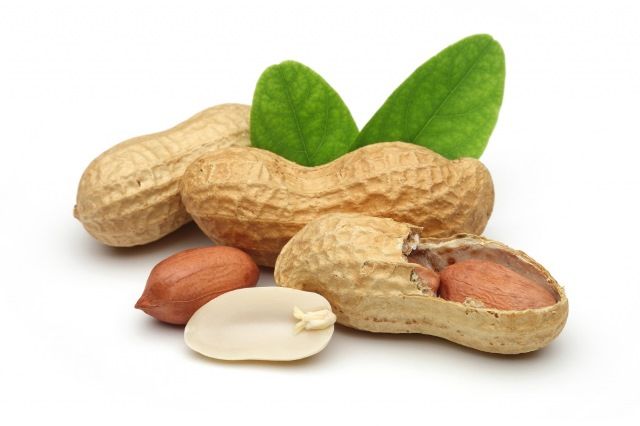
Contrary to popular belief, peanuts are not a nut, but a legume with proteins similar in structure to nuts.
These types of fruits can also cause allergies in children and adults due to the vicilin-like globulins and profilins they contain.
Peanut or tree nut allergies can occur at any age, but are more common in infants than in older children. But giving nuts to children under 3 years of age is prohibited, since the enzymatic system has not yet been formed. Consequently, children's intestines are not able to digest this product, and this fact increases the risk of allergies.
There are no significant differences between symptoms in children and adults.
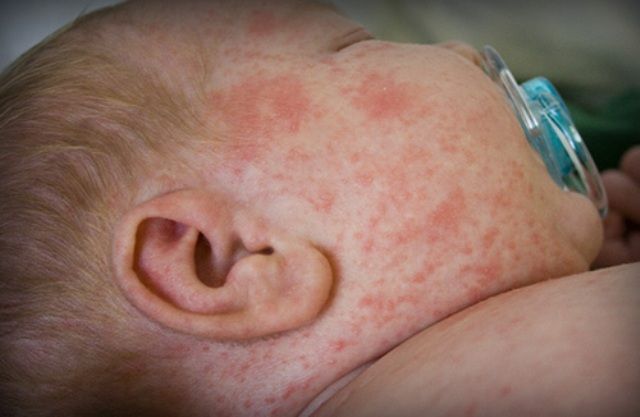
Basically, a child's true nut allergy lasts throughout his life. The probability of getting rid of it is about 9%.
If children have this type of food allergy, parents should inform relatives, friends, caregivers, teachers and other persons about this in order to avoid serious allergic reactions.
When breastfeeding, you are allowed to eat a couple of walnuts per day, other types should be excluded.
When faced with the disease for the first time, few people know how a nut allergy manifests itself. Typically, an allergic reaction occurs within a few minutes after consuming the product.
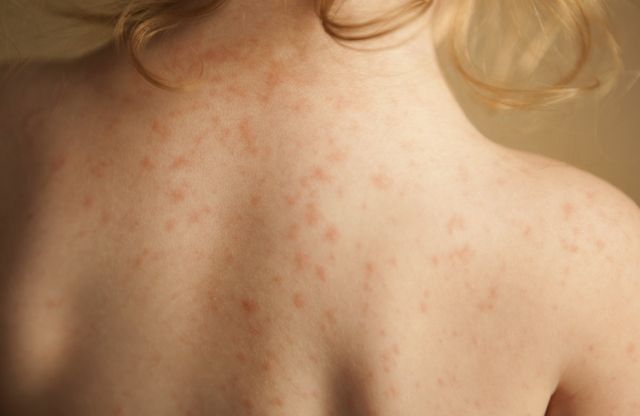
If serious allergic reactions occur, call an ambulance immediately.
In some cases, the reaction occurs in a delayed manner and may take a little longer to occur. Depending on the sensitivity of the allergy sufferer's immune system, symptoms may vary.
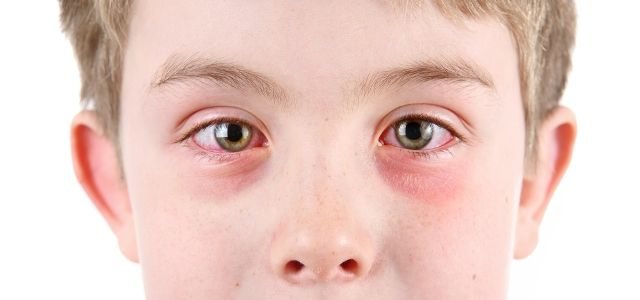
A nut allergy has the same symptoms as other types of food intolerance.
The most common manifestations are:
- Swelling of the mucous membranes: allergic runny nose, burning sensation in the nose, frequent sneezing, itching and redness of the eyelids, Quincke's edema;
- Skin manifestations: atopic dermatitis, urticaria, rash, red spots spreading throughout the body;
- Respiratory tract damage: sore throat, cough, shortness of breath, difficulty breathing, allergic asthma;
- Gastrointestinal manifestations: abdominal pain, nausea, vomiting, bloating, diarrhea, heartburn;
- Cardiovascular disorders: tachycardia, heart rhythm disturbances, panic attacks, anaphylactic shock (most often caused by hazelnuts);
- General malaise: dizziness, headache, migraine, weakness, etc.
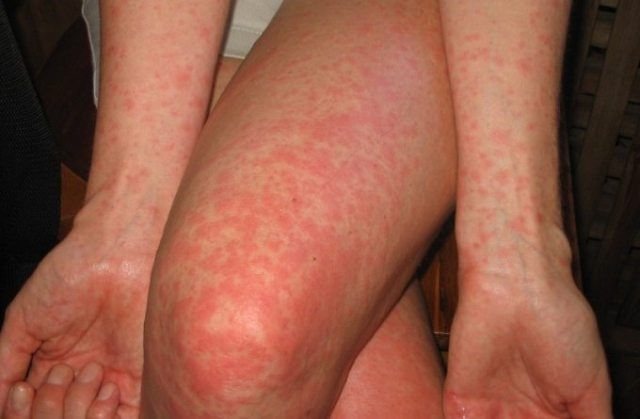
If a person has a peanut allergy, the symptoms are the same.
To identify the allergen that caused the symptoms, you should contact an allergist, who will take an anamnesis and determine a treatment plan.
In order to determine whether a nut is an allergen or not, a skin test (prick test) is performed, the results of which are known after 20 minutes.

Carrying out a prick test
The essence of the test is as follows: drops of allergens are applied to the patient’s wrist, which are pierced with a special lancet to penetrate the skin. If redness occurs at the puncture sites, the allergen has been identified.
Laboratory blood tests are also used for diagnosis, during which the type of reaction and allergen are determined. This type of research is the most reliable, but it will cost an order of magnitude more.
An allergic reaction can occur to even the smallest particles of nuts found in many foods. Therefore, allergy sufferers should pay special attention to the composition indicated on the packaging, and also adhere to a diet.
Allergenic proteins are not destroyed by heat treatment. Therefore, a person with a negative reaction to nuts should avoid eating certain foods and dishes, including:
- some confectionery products, cakes;
- bread and bakery products;
- chocolate;
- cheeses;
- sauces;
- marzipan;
- margarine;
- nut oils;
- liqueurs;
- muesli, etc.
For drug treatment, the following is used to relieve symptoms:
- antihistamines: Zodak, Cetrin, etc. In severe cases, you may need to take corticosteroids: Prednisolone, Prednisone, etc.
- If nasal discharge occurs, vasoconstrictor nasal drops are used: Nazivin, Xylene, etc.
- To quickly eliminate the allergen from the gastrointestinal tract, enterosorbent is used: activated carbon, Polysorb, Lactofiltrum, etc.
- Antihistamine or hormonal ointment is applied externally to the affected areas of the skin: Fenistil, Akriderm, Lokoid, etc.
Development mechanism
Intolerance to certain foods, accompanied by a pronounced reaction, is called an allergy. People of any age are susceptible to this disease. If it occurs in children, there is a chance that the person will outgrow it as the body strengthens. If the allergy concerns an adult, this is a chronic case.
Allergy is a pathology of the immune system. When foreign molecules enter the body, the body always evaluates these substances. If molecules are potentially dangerous, the immune system begins to fight them. This is how bacteria and viruses are neutralized. Sometimes it crashes. Safe molecules arouse “suspicion” in the body, which leads to various types of irritation. To prevent complications, you need to know how the disease manifests itself.
It does not arise out of nowhere without certain prerequisites. Certain factors push the body to develop an allergic immune response:
- genetic predisposition;
- immaturity of immunity, characteristic of children;
- weakened immunity after serious illness;
- depletion of protective forces by stress;
- helminthic infestation and poisoning of the body with the products of their vital activity;
- hormonal changes;
- bad ecology.
Everything about nut allergies: the degree of allergenicity of different types, symptoms, diagnosis and treatment
The reaction to nuts is of the immediate type. This means that it manifests itself immediately after consuming an allergen: the immune system rejects substances that it mistakenly considers hostile. The peculiarity of allergies lies in their unpredictability: depending on which particular nut caused the negative symptoms, the reaction can be very pronounced or completely unnoticeable, since each of them has its own degree of allergenicity.
From a botanical point of view, nut has several definitions:
- They are called dry, single-seeded, closed, syncarpous lower fruits that have a woody pericarp (hazel). Inside this fruit lies a seed. An example is hazelnuts or hazel.
- They are also considered to be all representatives of the Nut family, sometimes they also include representatives of the Beech-flowered family, to which the Nut family belongs, i.e. the latter is a narrower concept.
All the others, from a botanical point of view, are not them at all. In everyday life, they are usually called this or that edible fruit, which has a hard or soft shell and core. In addition, these include coconut, pine and other nuts.
They are a source of many beneficial substances. For example, walnuts are used for the preventive treatment of atherosclerosis. In addition, they help restore cobalt and iron deficiency in the body. They give strength, so their consumption is recommended for people whose work involves constant physical activity.
Hazelnuts, thanks to the vitamin E they contain, remove carcinogens from the body and prevent the development of cancer and heart disease. In addition, it contains potassium and zinc: the first helps maintain normal central nervous system activity, and the second is involved in the functioning of female and male hormones.
Peanuts contain folic acid, which is actively involved in the process of cell growth and formation. A good balance of amino acids in it allows them to be absorbed in the body as quickly as possible, and various microelements have a positive effect on the cardiovascular and muscular system, as well as on the brain. In addition, peanut butter is good for removing bile from the body.
Almonds cleanse the blood, break up kidney stones and remove bile. Raw almonds are difficult to digest, so they are often eaten with honey or sugar. This mixture is very useful for potency.
This product often causes indignation in the body, but this may not always be an immune reaction. The reasons may be a response to additives in finished products or chemicals used in industrial cultivation, abuse, poor quality food, etc.
The reaction, as a rule, develops not to one type of nut, but to several at once. In cases where a person has suffered from this pathology since childhood and only of a certain type, it may go away over time.
Many people wonder if there are non-allergenic nuts. Unfortunately no. The most allergenic is peanuts (75% of cases of the total). However, the classification of peanuts as nuts is very conditional, because they are a leguminous plant. Along with it are pecans and cashews. Walnuts and pistachios have a moderate degree of allergenicity. The safest are forest and hazelnut.
Allergens can also be hidden, that is, they can be part of other products. A person prone to “nut” allergies should exclude from the diet:
- liqueurs such as Amaretto;
- marzipan;
- praline;
- chocolate with hazelnuts, almonds;
- halva with peanuts
- national dishes of Asian cuisine, etc.
In addition, it is dangerous to eat nuts together with other highly allergenic protein foods, as well as to consume them with alcohol. In this tandem, the negative effect on the body increases.
Since nuts are included in a large number of finished products, many blame them for pathological reactions in the body. But in this case, it can be caused not by the hard fruits themselves, but by various additives: dyes, flavors, emulsifiers, flavor enhancers, preservatives. Therefore, when buying this or that food product, you need to carefully read the composition.
Negative manifestations can also be caused by pesticides used during cultivation.
Symptoms similar to allergic ones also develop with banal overeating (a false allergy develops). This applies to all products. The number of nuts consumed per day is usually strictly limited, since this is not only a highly allergenic product, they also contain a large amount of fat, which, if abused, can lead to digestive disorders.
Nuts can also cause contact allergies. This is possible in the following cases:
- when using various face and body skin care products that contain nut derivatives;
- when kissing a person who recently ate this product (up to an anaphylactoid reaction).
In addition to all of the above, nuts can also cause poisoning. One of the most “poisonous” is almonds. Bitter almonds contain enough of the substance amygdalin, which gives it such a taste.
It also contains the enzyme emulsin, which, interacting with amygdalin, is destroyed, during which the poison is released - hydrocyanic acid. Emulsin can only be removed through heat treatment, so it is not recommended to eat almonds raw.
The proteins contained in nuts are found in many other foods, so cross-reactions may occur. For example, earthen ones “cross” with beans, soybeans, carob and peas. Almonds – with rosehip, quince, plum, apricot and marzipan. Forest trees belonging to the Birch family can cause a cross-allergic reaction with birch pollen, alder, etc. Coconuts, in turn, are combined with dates and palm sugar, and cashews and pistachios are combined with mango fruits.
In infants, pathology may occur due to the fact that the mother abused highly allergenic foods during pregnancy or does not follow the diet of a nursing mother during lactation. The same can happen if, while carrying a child, a woman often suffered from infectious diseases or her chronic diseases worsened, there was a threat of miscarriage or fetal hypoxia.
Children are susceptible to allergies due to reduced immunity due to frequent acute respiratory viral infections, as well as due to the immaturity of the digestive system. Its complete formation occurs closer to three years, so often in allergy sufferers the reaction goes away with age.
If this does not happen, they are forced to abandon this product forever. It is also possible for adults who have not previously suffered from allergies to develop allergies. This happens with chronic diseases of the endocrine system and gastrointestinal tract.
The main symptoms characteristic of this disease are:
- itching sensations in the mouth, hoarse voice, swelling of the nose, cough, lacrimation;
- gagging, abdominal pain, diarrhea;
- rashes all over the body, often around the mouth.
In addition to respiratory and skin signs, disorders of the gastrointestinal tract, Quincke's edema and anaphylaxis are possible. These are very dangerous conditions that require immediate medical attention. The first, due to swelling of the respiratory tract, can lead to suffocation, and the second - to a sharp decrease in pressure and coma against the background of multiple manifestations. Both pathological conditions are fraught with death.
When the first signs appear, it is necessary to contact a specialist - a therapist, and, if possible, an allergist, who examines and interviews the patient, and also prescribes additional diagnostics.
First of all, based on the results of collecting information, the doctor will suggest trying to identify the allergen by elimination. To do this, certain foods are excluded one by one for 2 weeks, and then introduced into the diet again. The method can be supported by keeping a food diary, where you need to record all the foods you eat and your reaction to them.
Causes
Typically, food allergies to nuts are diagnosed in childhood. And some patients suffer from this intolerance throughout their lives. But there are cases of the disease developing in adulthood.
Proteins have been identified in nuts that can trigger the process of sensitization and the development of allergies:
- glycinin;
- vicilin;
- amandine;
- profilin and others.
Heat treatment of some types of nuts (almonds, peanuts) increases the allergenic activity of proteins. Allergy to peanuts develops more often (75% of cases), Brazil nuts are slightly less allergenic, followed by almonds and hazelnuts.
Often, if there is intolerance to nuts, there is a cross-allergy to protein compounds of certain plants, fruits, and vegetables that have a similar molecular structure. For example, if you are intolerant to walnuts, eating legumes, plums, apricots, and grapes will also cause an allergic reaction.
As for raw almonds, they contain amygdalin glycoside (5%) and the enzyme substance emulsin. Under the influence of emulsin, amygdalin is destroyed and releases a strong poison - hydrogen cyanide (hydrocyanic acid). If almonds are roasted, the emulsin is destroyed and does not interact with amygdalin.
A reaction to a Brazil nut can develop from a high concentration of radium in it, aflatoxin in the shell. Before eating any nut, the shell must be peeled. Brazil nuts can be consumed in very small quantities, since due to the high concentration of various chemical compounds, their overdose in the body can occur. If you are allergic to Brazil nuts, you may have a cross-reaction to mangoes.
Learn about the benefits of hirudotherapy and the treatment of allergies using leeches.
Read about the symptoms and treatment of food allergies in infants here.
First aid
- Adrenaline is injected subcutaneously, which restores normal blood circulation.
- The administration of Dopamine is established through a vein.
- Glucocorticoids must be administered subcutaneously - Prednisolone, Dexamethasone or the more modern drug Celeston.
- Eufillin and No-shpu are administered intravenously.
- For angioedema, especially if it is accompanied by laryngeal edema, an additional diuretic is administered.
- If bronchospasm persists, inhalation of Salbutamol or Berodual is done through a nebulizer.
It is impossible to recover from the disease, but exacerbations and its severe consequences can be avoided. To do this, follow a diet and carefully read the contents on food packaging. If you experience the first symptoms of an allergy, be sure to contact an allergist!
Among the types of food intolerance, nut allergies are quite common. Moreover, the word “nut” also includes products such as peanuts and nutmeg, which are not nuts from a biological point of view. How to understand the essence of the problem, identify the allergen and get rid of unpleasant consequences? This is exactly what will be discussed in the article.





